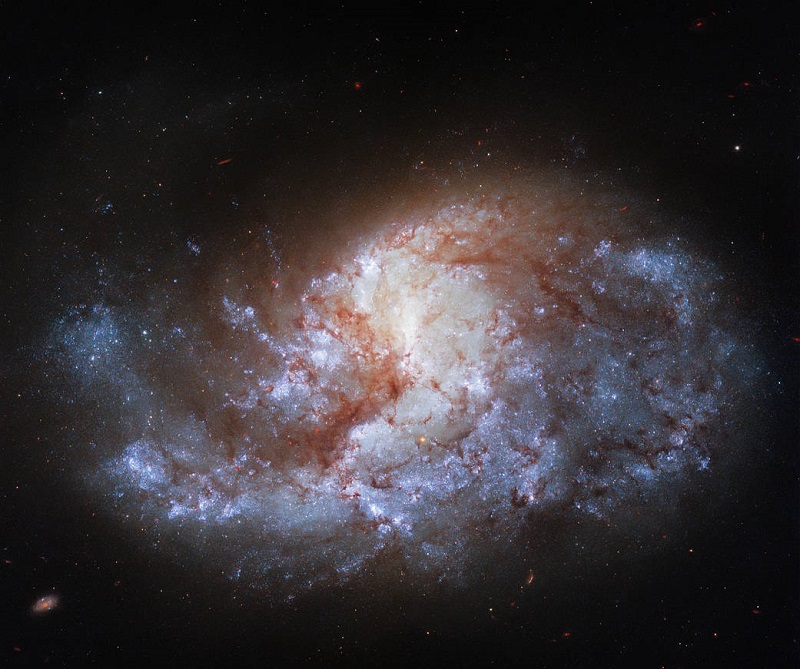
NASA announced on Friday that its Hubble Space Telescope captured an image of a “jewel-bright” spiral galaxy, which is 68 million light years from Earth.
NASA and the European Space Agency shared the photo of this sparking “new” galaxy on Friday. NASA said in a blog post that it shows NGC 1385, a galaxy in the constellation called Fornax.
Hubble’s Wide Field Camera 3 — a “workhorse camera” — captured the image, the US space agency said. The camera was installed in 2009 during the most recent Hubble visit by astronauts, it added.
The name Fornax derives from the Latin word for furnace.
“The constellation was named Fornax by Nicolas-Louis de Lacaille, a French astronomer born in 1713,” the ESA said in text accompanying the photo.
The agency added: “Lacaille named 14 of the 88 constellations we still recognize today. He seems to have had a penchant for naming constellations after scientific instruments, including Atlia (the air pump), Norma (the ruler, or set square), and Telescopium (the telescope).”
✨ Happy #HubbleFriday! ✨
This image shows off the beautiful spiral galaxy NGC 1385, which is about 68 million light-years from Earth. It’s located in the Fornax constellation, which is the Latin word for furnace!
Explore more: https://t.co/sbiDVzUd5T pic.twitter.com/7mgSIIK1PS
— Hubble (@NASAHubble) August 20, 2021
Hubble telescope in search of distant galaxies
The Hubble Space Telescope, which was launched into low Earth orbit way back in 1990, remains in operation today. It was not the first space telescope, but it is one of the largest and most versatile, renowned both as a vital research tool and as a public relations boon for astronomy.
Hubble features a 2.4 meter (7 feet 10 inch) in diameter mirror, and its five main instruments observe in the ultraviolet, visible, and near-infrared regions of the electromagnetic spectrum.
Hubble’s orbit, outside the distortion of the atmosphere of Earth, allows it to capture extremely high-resolution images with substantially lower background light than Earth-based telescopes. It has recorded some of the most detailed visible light images, allowing a deep view into space.
Many Hubble observations have led to enormous breakthroughs in astrophysics, such as determining the rate of expansion of the universe.
Hubble is the only telescope designed to be maintained in space by astronauts. Five space shuttle missions repaired, upgraded, and replaced systems on the telescope, including all five of its main instruments.
The fifth mission was initially canceled on safety grounds following the Columbia disaster back in 2003, but NASA administrator Michael D. Griffin finally approved the mission, which was completed in 2009.
The telescope completed 30 years in operation in April 2020 and could last until 2030–2040. One successor to the Hubble telescope is the James Webb Space Telescope (JWST) which is tentatively scheduled to be launched in late 2021.
See all the latest news from Greece and the world at Greekreporter.com. Contact our newsroom to report an update or send your story, photos and videos. Follow GR on Google News and subscribe here to our daily email!



